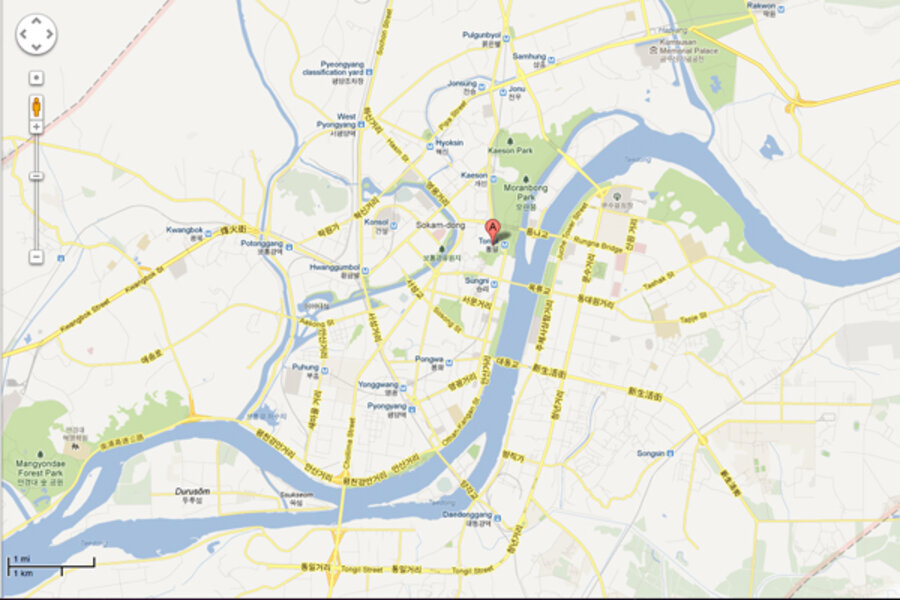Google Maps presents North Korea through a new lens
Google Maps has ventured everywhere from the Swiss Alps and Antarctica to the rugged terrains of the Grand Canyon. With its latest map of North Korea, the web-mapping application offers a glimpse into one the most isolated countries on the world.
Google released mapping data of North Korea on Monday, revealing restaurants, hotels, and other signs of industrialized life in the capital city of Pyongyang, as well as many prison labor camps within the nation’s borders.
“For a long time, one of the largest places with limited map data has been North Korea. But today we are changing that,” writes Jayanth Mysore, senior product manager for Google Map Maker, in the Google Maps blog.
The map is the product of Google Map Maker and its community of "citizen cartographers," according to the blog.
The crowd-sourced mapping system has had access to the data since 2009, according to a Google spokesman. The submissions had to be refined before going live on Google Maps.
North Korea was one of the last countries with almost no previous data on Google Maps, the spokesman says. Before Monday, the country was completely blank on Google Maps, except for a few labels of major cities.
The developments come three weeks after Google Executive Eric Schmidt's humanitarian trip to North Korea. However, the map has no connection to Mr. Schmidt's visit, according to a Google spokesman.
Jim Walsh, a research associate at the Massachusetts Institute of Technology’s Security Studies Program, says the new data could provide crucial insight to those studying North Korea.
“It’s going to be very helpful moving forward,” Mr. Walsh says.
In Pyongyang, Google Maps outlines everything from city streets and markets to the Kim Man-yu Hospital and the North Korean Workers Party Monument.
The map highlights a number of other details, such as armories and North Korea’s notorious prison labor camps. One gulag, known as Camp 22, appears near the North Korean and Chinese border.
This is not the first map of North Korea that’s available online. Curtis Melvin, editor of the North Korean Economic Watch Blog, says on his website that he has spent several years compiling public maps, interviews, innovative analysis, and other data for a Google Earth representation of North Korea. The Google Map Maker, however, is the first official crowd-sourcing project to take on the mysterious North Korean peninsula.
Walsh says the map not only casts a spotlight on North Korea, but also provides information that could dispel misconceptions about the country.
“What’s really useful about a project like this is it allows you to see change over time,” Walsh says. “It’s not just a snapshot most people in their heads have a notion of.”
The North Korea that many imagine is not the North Korea that exists today, Walsh says. The country has experienced some economic gains with more restaurants, cars, and people in the capital. Meanwhile, the nation’s economy continues to deteriorate in the countryside and in the industrial cities to the north.
“Elites are getting wealthier and the rest of the country appears to be as poor or getting poorer,” Walsh says. “That’s an important dynamic. That’s not the fixed image we have in our mind that North Korea is always poor.”
How does Google Maps play into this? The more data that becomes available to the public, the easier it is for people in the United States and in South Korea to understand the economic and cultural developments in North Korea, Walsh says. More information could mean less conflict down the line.
For more tech news, follow Steph Solis on Twitter: @stephmsolis







